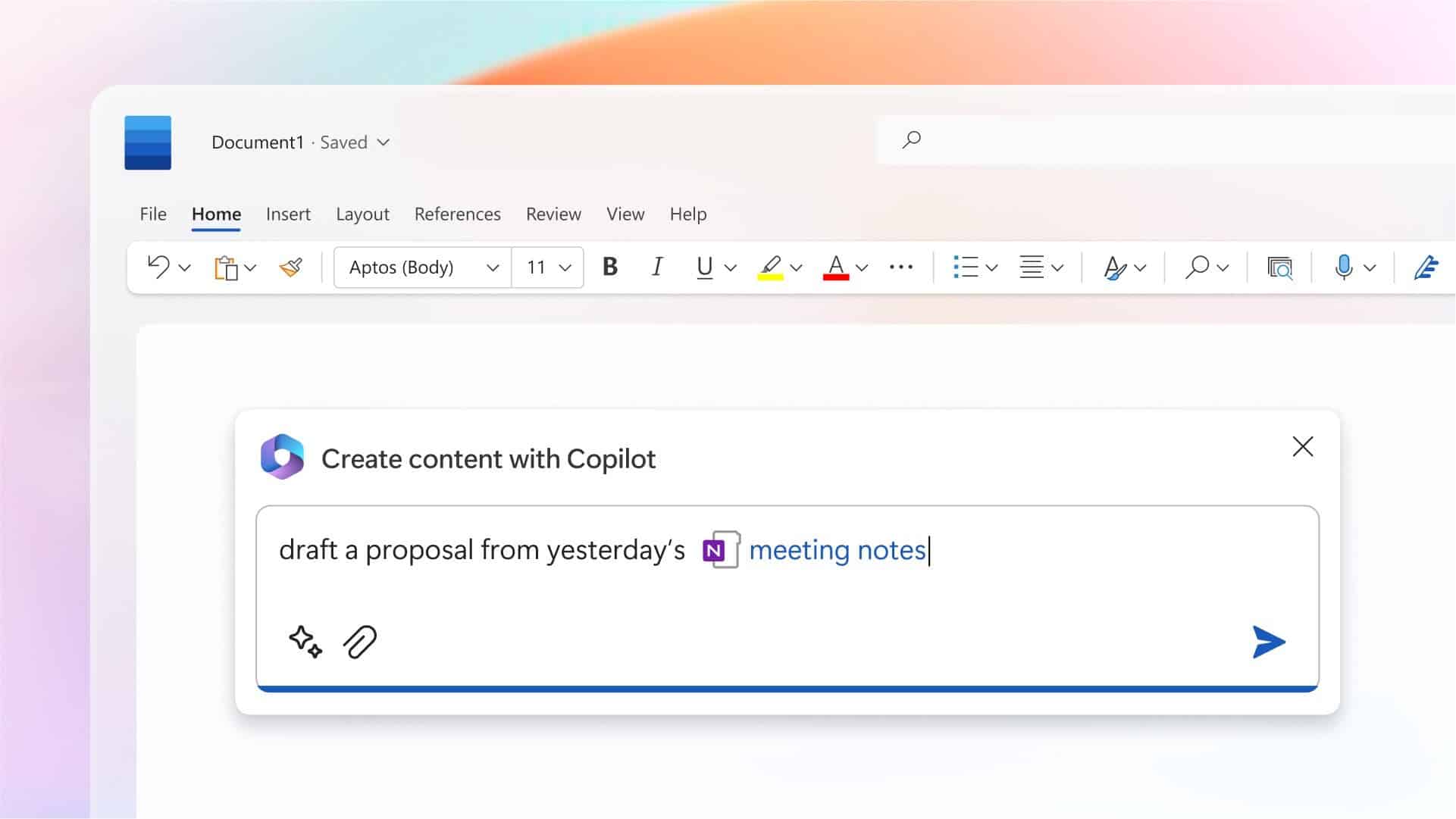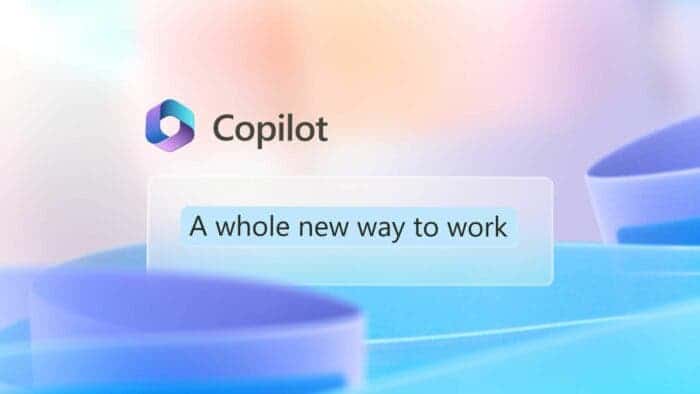Earlier today, the Redmond-based tech giant announced the launch of Microsoft 365 Copilot. The latter is the next-gen of AI productivity tech, which is based on a large language model. It is available to some business users.
What is Microsoft 365 Copilot?
Microsoft 365 Copilot will be used to help users create documents, emails, PPTs, and other tasks in Microsoft 365 apps and services. It’s not hard to guess that it’s powered by OpenAI’s GPT-4. We can see the chatbot’s icon in the sidebar of Microsoft 365 apps. With it, you can generate text in documents, create PowerPoint slides from Word documents, and it can even help with features like Pivot Tables in Excel.
In fact, it is a new way of working with Microsoft products and doing tasks. What’s more, you can talk to it in a natural way, and it will help you like a human. For example, you can ask it to update the team on product strategy updates, which will generate a status update considering the morning’s meetings, emails, and chat threads.
It’s an AI-enabled chatbot that can create a 10-page slide PPT from Word documents per your request. As another example, it can analyze data in Excel. In simple terms, you can use Copilot to create a SWOT analysis or pivot table based on the data.
In Microsoft Teams, the Copilot feature can transcribe meeting content, remind you of what you might have missed if you joined a meeting late, and even summarise action items during the meeting.
Copilot will also be available in Outlook. It helps users spend less time deleting and replying to emails. It can summarise email threads and even create draft replies with options to adjust the tone or length of emails.
Microsoft plans to roll out a business chat feature across Microsoft 365 data and apps. It uses Microsoft Graph2 to integrate documents, emails, notes, and contacts into a single chat interface in Microsoft Teams. It should be able to generate summaries, plan overviews, and more.
AI Changes the Office Work
Microsoft 365 Copilot is being tested with 20 customers, and the preview will be expanded in the coming months. But there is no word on when users will be able to experience the capabilities of Microsoft 365 Copilot.
There are concrete concerns about this innovation pace at Microsoft and its AI models’ accuracy.
“We make it clear how the system makes decisions by noting limitations, linking to sources, and prompting users to review, fact-check, and adjust content based on domain expertise,” Spataro said in a blog post.

By the way, not long ago, Microsoft axed its AI ethics and society team. It had been working to identify the risks posed by Microsoft’s adoption of the OpenAI language model in its software and services. This has caused some inside and outside Microsoft to worry about the speed of AI-powered software. Spataro doesn’t share these concerns. “To meet the unmet needs of our customers, we need to move quickly and responsibly, learning as we go. We’re testing Copilot with a small group of customers to get feedback and improve our models as we scale, and we’ll be expanding to more customers soon.”





